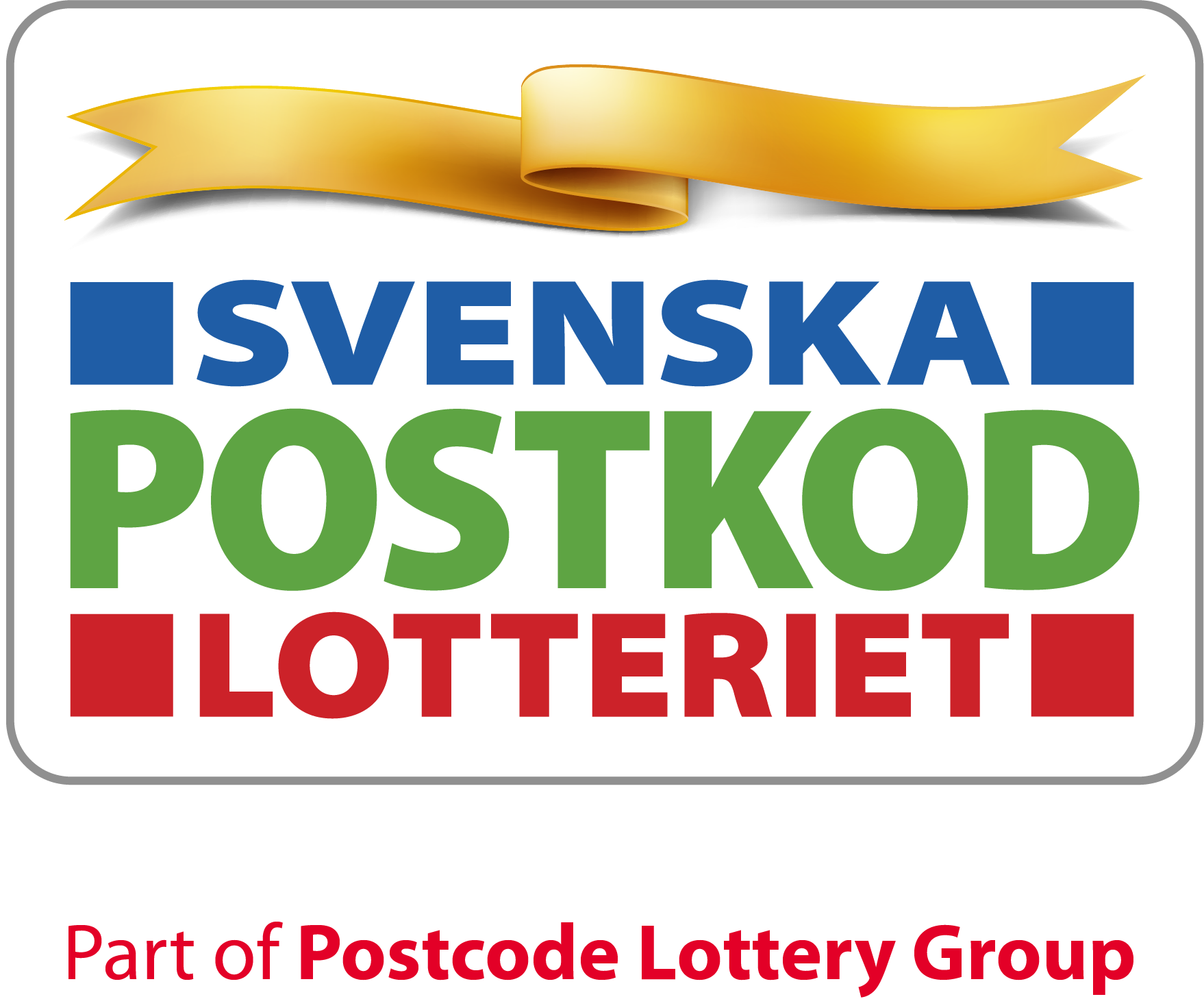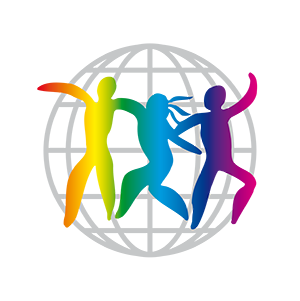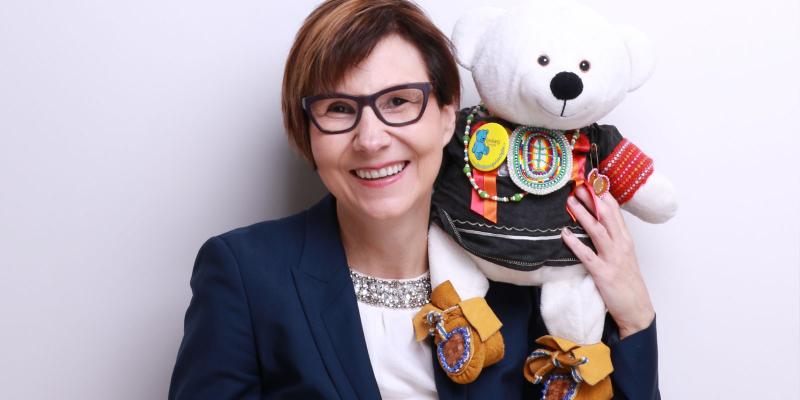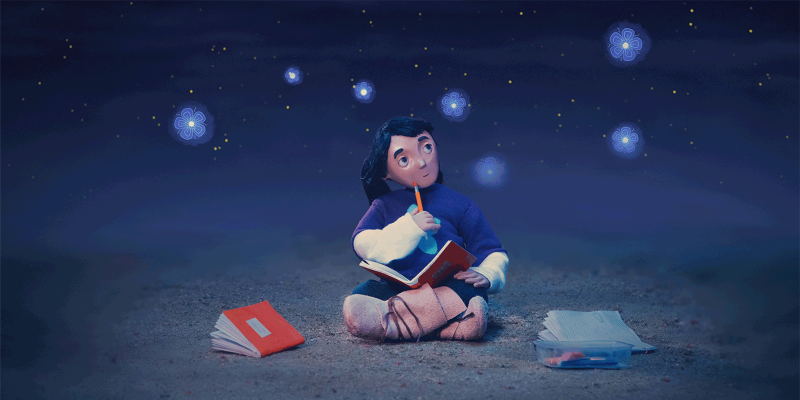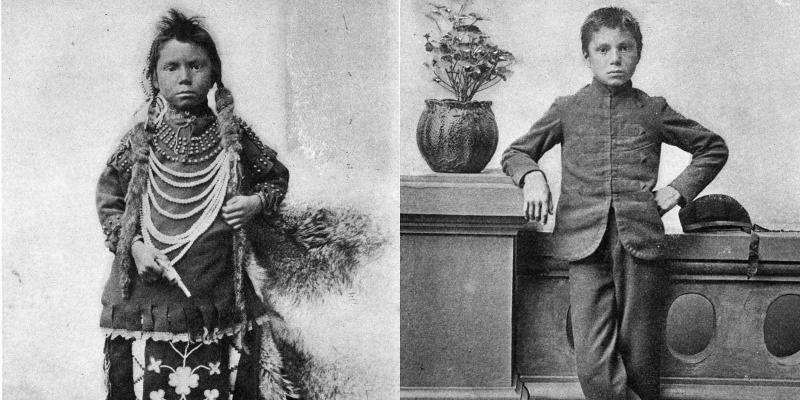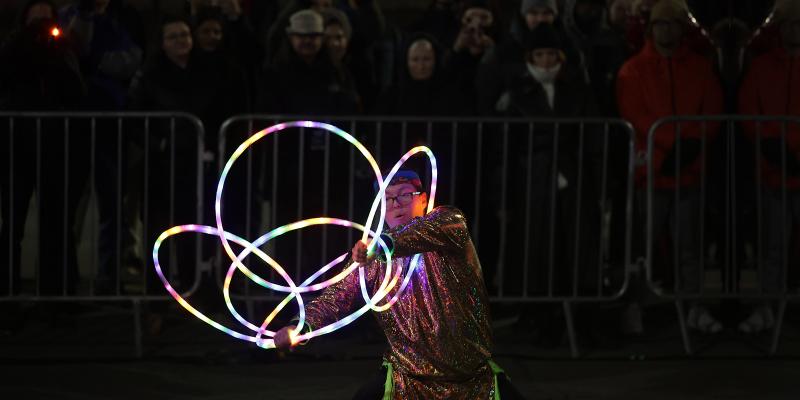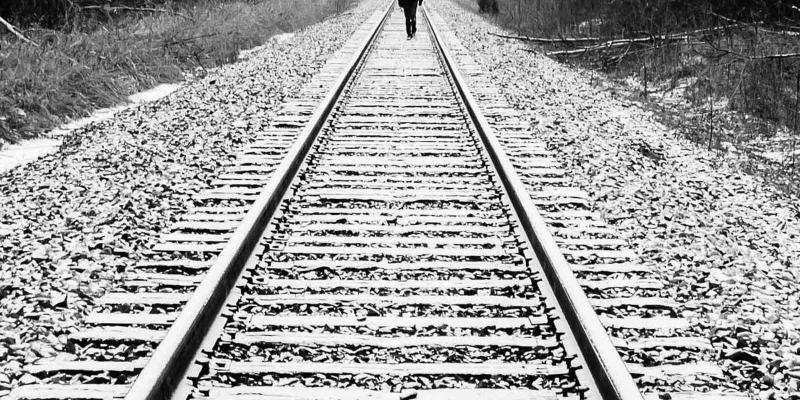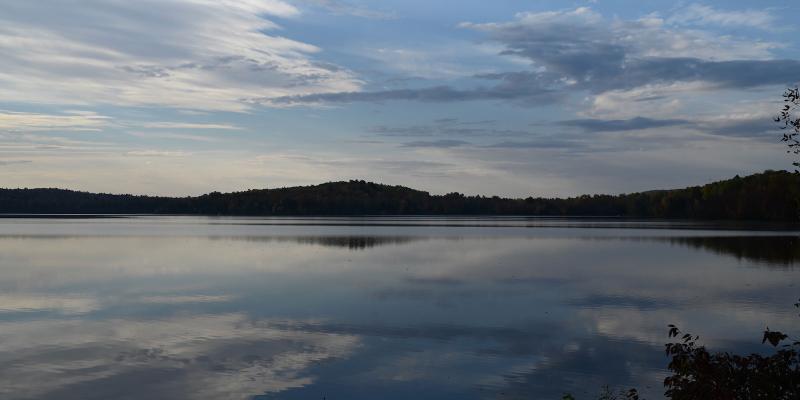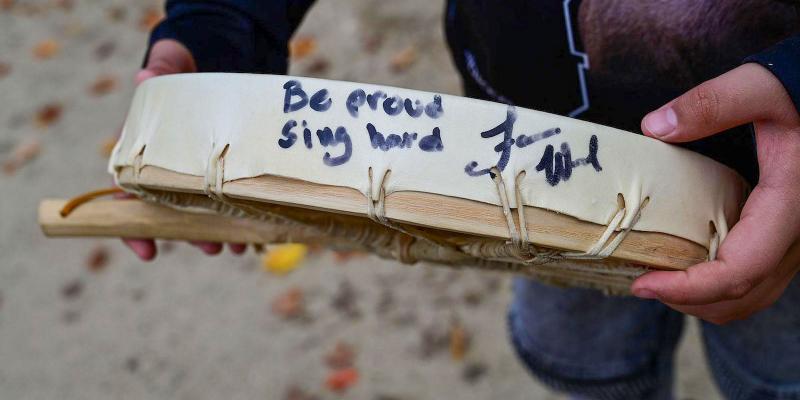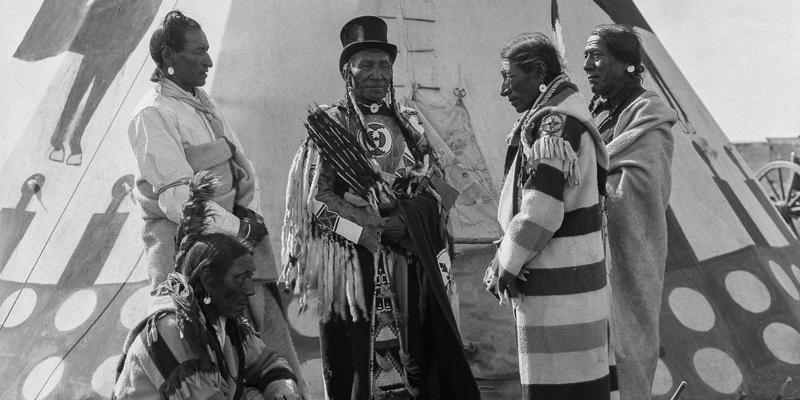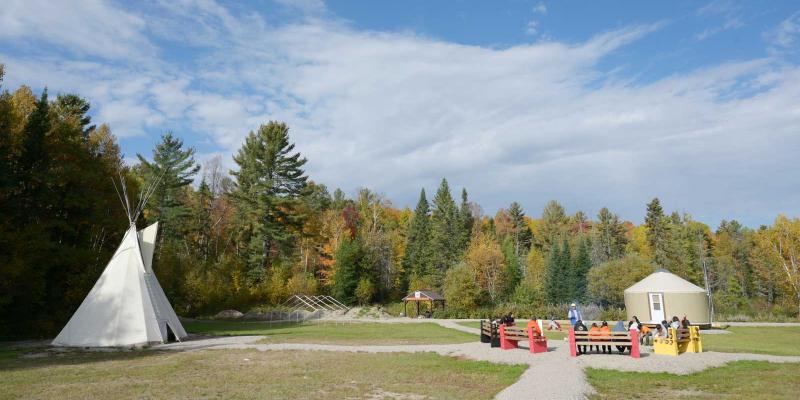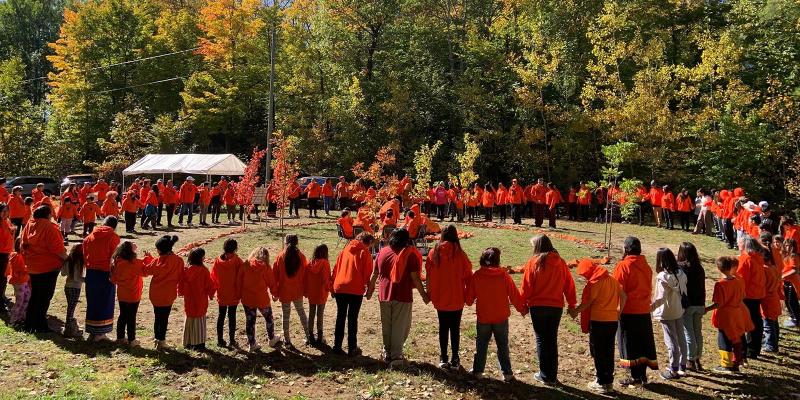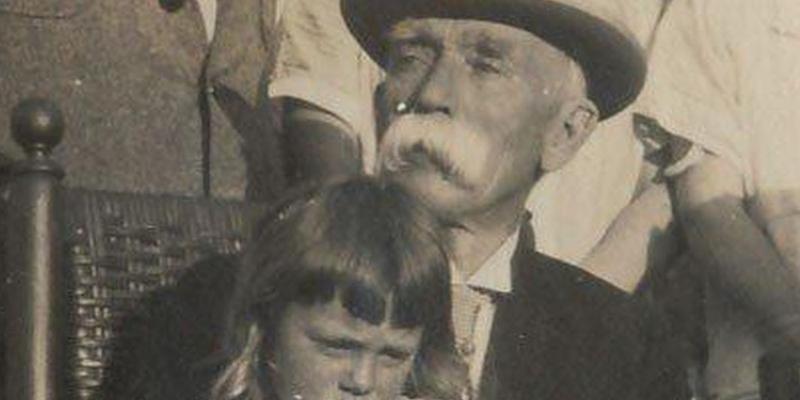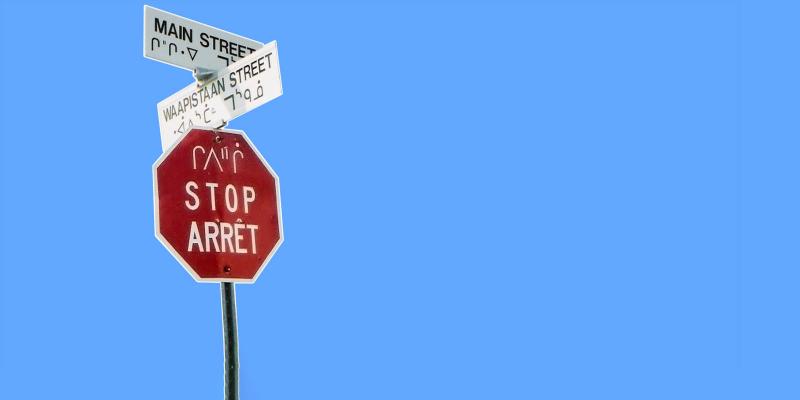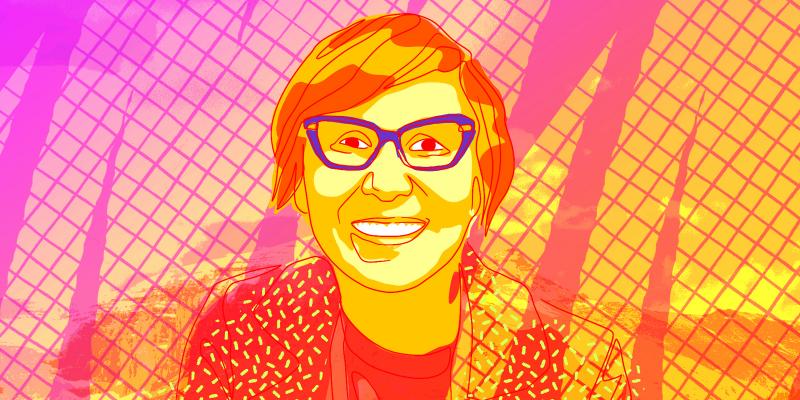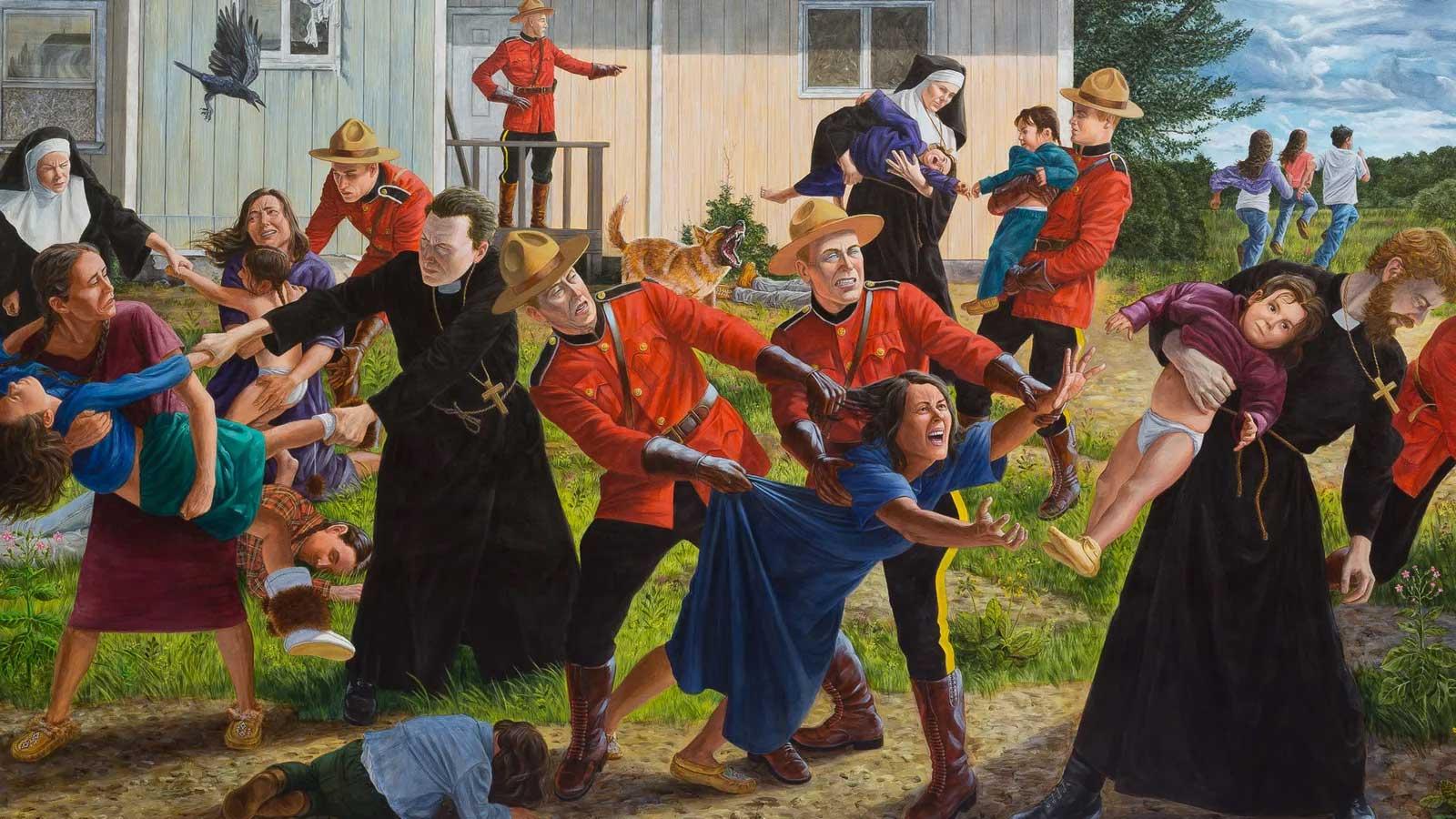
The Canadian government decided that Indigenous children had to be taken away from their mums and dads before they ‘learned to become savages like their parents’. It wasn’t long before there were hardly any children left in Indigenous communities that parents could hug and care for.
After the country of Canada was created in 1867, the government established a law, the ‘Indian Act’ and a government office for ‘Indian Affairs’ to control the Indigenous peoples.
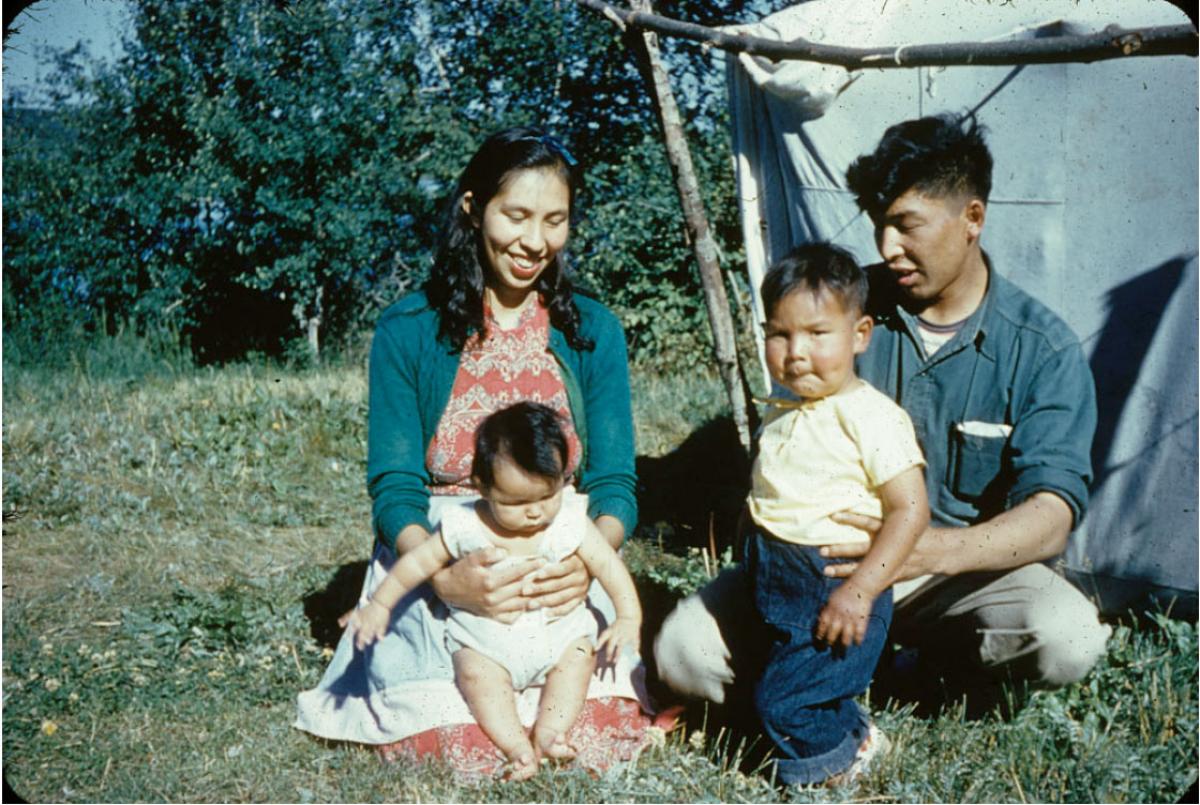
End of family life
The Canadian government decided that Indigenous children had to be taken away from their mums and dads before they ‘learned to become savages like their parents’. It wasn’t long before there were no children left at all in Indigenous peoples’ communities that they could hug and look after.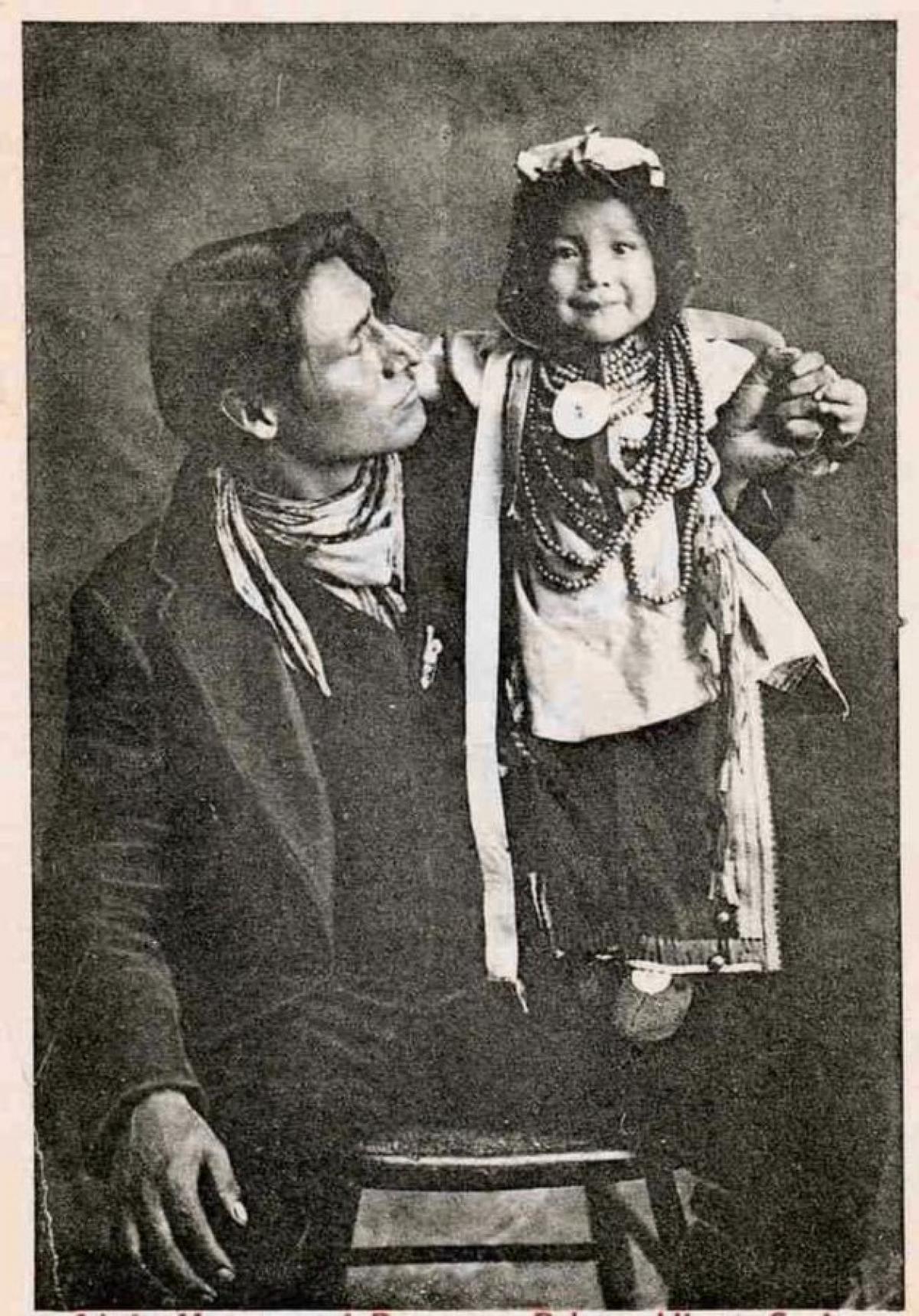
From 1920, the schools were compulsory for Indigenous children aged 5–15, and many Indigenous communities were almost completely emptied of children. For over 100 years, 150,000 children were taken to residential schools run by churches on behalf of the government.

The idea was to teach the children the ‘white man’s way of being and thinking’. The children were given English or French names. They weren’t allowed to speak their own language or feel pride in their culture.
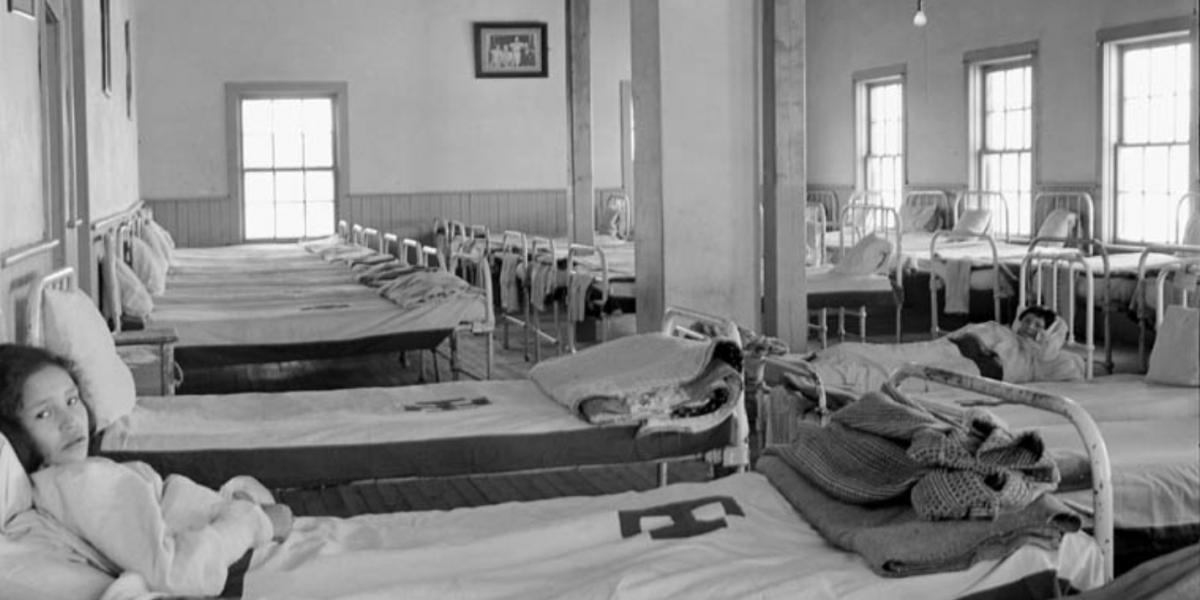
Sent to their deaths
As early as 1907, newspapers in Canada wrote that children ‘died like flies’ at residential schools. They died for all kinds of reasons, including lung diseases, malnutrition, workplace accidents and fires. So lots of people were aware of what was happening, but almost no one, neither politicians nor ordinary people, did anything to stop it.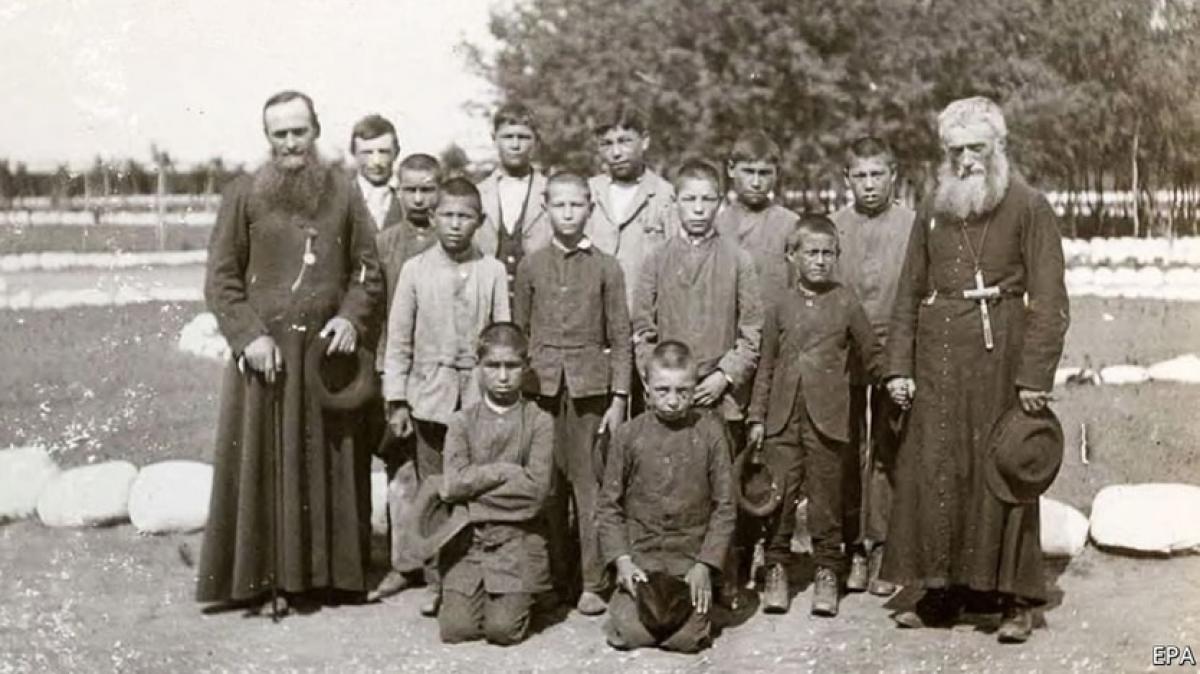
Because the residential schools received far less money than other schools in Canada, there was a shortage of everything from food, to medicines and school books.
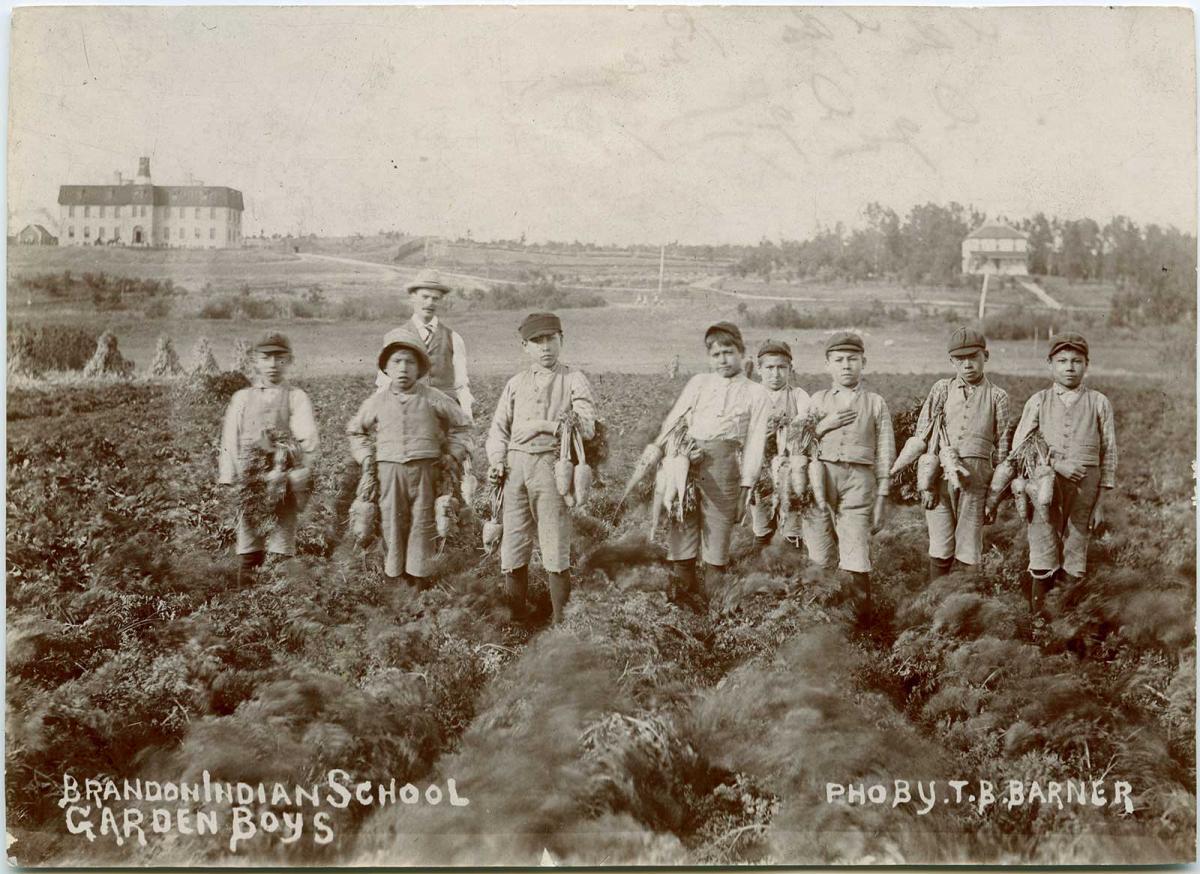
Children died
Many children became ill and died. It was a way for Canada to try and wipe out, or eradicate the culture of the Indigenous peoples. But despite all the damage and sorrow they caused, they didn’t succeed. Indigenous peoples are still there, fighting for their rights and a better future.TEXT: Carmilla Floyd
PHOTO: Library and Archives Canada.
Top image: The painting ‘The Scream’, by Cree artist Kent Monkman, shows how Indigenous children were forcibly taken to residential schools by police, priests and nuns. Kent Monkman (Fisher River Band Cree), The Scream, 2017. Denver Art Museum: Native Arts acquisition funds and funds from Loren G. Lipson, M.D, 2017.93. © Kent Monkman. Photography Court
Långgatan 13, 647 30, Mariefred, Sweden
Phone: +46-159-129 00 • info@worldschildrensprize.org
© 2020 World’s Children’s Prize Foundation. All rights reserved. WORLD'S CHILDREN'S PRIZE®, the Foundation's logo, WORLD'S CHILDREN'S PRIZE FOR THE RIGHTS OF THE CHILD®, WORLD'S CHILDREN'S PARLIAMENT®, WORLD'S CHILDREN'S OMBUDSMAN®, WORLD'S CHILDREN'S PRESS CONFERENCE® and YOU ME EQUAL RIGHTS are service marks of the Foundation.
